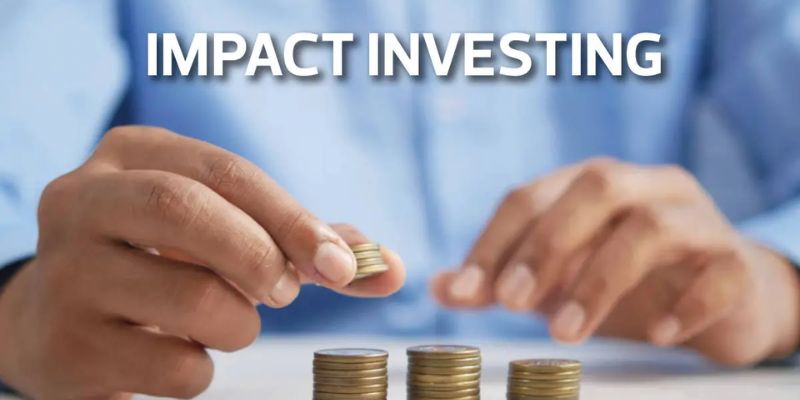The Rise of Impact Investing isn’t just a trend—it’s the future of smart money. I’m here to tell you: investing with your heart doesn’t mean leaving profits behind. It’s about hitting two birds with one stone. You earn cash and boost the world’s health. You’ll learn how this shift from cold, hard gains to warm, world-changing investments is reshaping our planet’s economy. By the end of this, you’ll understand how to pick investments that reflect your values and pad your wallet, too. Taking action today means a better tomorrow for all—let’s dive in and figure out how your money can work harder, for you and for the world.
Understanding the Foundation of Impact Investing
Exploring the Principles of ESG and Their Role in Investment Decisions
Impact investing is a game-changer. It’s about making money while doing good. It blends the drive for high returns with a desire to help the world. Let’s dive into how it works, starting with ESG principles. These are rules that weigh up a company’s care for the environment, how it treats people, and how it runs itself. They are a big deal in deciding where to invest.
Picture putting your money into a business. You want it to grow, right? But with ESG, growth isn’t enough. You check if the business is clean, fair, and honest. Do they recycle? Are their workers happy? Do they play by the rules? These things matter now more than ever.
Many want their dollars to make a mark beyond the cash register. This means looking at how a business lines up with what matters to them. Green companies? Yes. Firms that treat workers well? Top of the list. Honest operations? Non-negotiable. People are choosing where their money sleeps based on these ESG principles.
The Historical Shift From Traditional to Socially Responsible Investing
Long ago, folks cared about one thing: making more money. How they did it didn’t matter much. But things change. As the world woke up to issues like pollution or unfair work, people’s views on investing shifted.
To track with this change, let’s hit the rewind button. Jump back a few decades. Investing was simpler; profits were king. Fast forward to now, and the scene’s different. We see a huge jump in socially responsible investing. Now, how you make the money is as telling as how much you make.
Investors are no longer just dollar-focused. They’re digging into what a company does for the planet and its people. This shift means something big for business. It’s not just about the products they make or services they offer. It’s also their impact on the world.
This shift isn’t just a trend; it’s here to stay. With each year, more people want to invest with purpose. They seek out ways to make the world better while still seeing their money grow. Impact investing is the bridge between the old way of chasing profits and the new wave of doing it with a conscience.
It started with just a few people. But now, as more join in, it’s clear that this kind of investing can really shape our future. Green bonds, ethical funds, renewable energy—these are not just buzzwords but investment choices. They show that what was once a ripple is now becoming a wave.
In both rich tales of past markets and the bright promise of tomorrow, one thing stands out: when we invest, we can either turn a blind eye or see a chance to make a difference. And for many today, the choice is clear – they pick impact investing. It’s a path that promises to make their money work not just for them, but for a better world too.

The Growth and Evolution of Sustainable Investing
Analyzing Impact Investment Trends and Sustainable Investing Growth
We’re in a time where making money meets doing good. The world of impact investing is booming. More people want their cash to count for more. They seek ways to help the planet and people, not just their pockets. This shift is big news!
Sustainable investing growth is like a tree growing strong roots. More investors are choosing ESG (Environmental, Social, and Governance) principles. They want businesses that care for the earth, treat people right, and run things fairly.
What’s driving this wave? A mix of heart and smart. Investors are spotting chances to back causes they care about. And guess what? Doing the right thing can also mean good money. Studies show that investing with ESG in mind can beat traditional methods. This new investing style is not just a fad. It’s the future, shaping how we think about the role of money. It’s about lasting value, not quick cash.
Spotlight on Innovative Financial Instruments: Green Bonds and Renewable Energy Funds
Let’s shine a light on some cool tools that put your dollars to work for good. Green bonds are one hot ticket. They’re like loans you give to get projects that help the earth off the ground. Think wind farms and solar panels.
Renewable energy funds are also making waves. They pool money into tech that fights climate change. By investing in these, you’re part of the push for cleaner, greener energy.
These tools are not just nice for nature. They make sense for savers too. They offer fresh options for growth as the world shifts to sustainability.
There’s a lot to be excited about with impact investing. It’s the path to weave good into the fabric of finance. It’s the bridge between making profits and making a positive mark. As this trend gains steam, expect to see more savvy investors jumping on board. It’s time to get clued in and consider how you can join in on the journey toward a future where every investment dollar does double duty for returns and good.

The Mechanics of Impact Investment Strategies
Navigating Ethical Investment Strategies and Triple Bottom Line Approaches
When I talk to folks about impact investment, eyes light up. It’s not just about money. It’s about change. And now, more than ever, we are seeing ethical investment strategies shape the future. The triple bottom line approach is key here. It’s not all about profit. People and planet matter just as much. Companies score high when they do good for society and nature. They win our trust and attention.
Investing ethically means you care about where your money goes. It means helping communities, saving forests, or supporting clean energy. Imagine your money helping a kid read or a forest grow. That’s what this is all about. And it is growing fast. People want their investments to reflect their values. The world is on board, and the train has just left the station.
Methods for Measuring Positive Impact and Social Impact Analysis
Measuring true impact can be tricky. How can you tell if your money is doing good? Enter social impact analysis. These methods crunch numbers and look at outcomes. They tell us if an investment is really helping. Analysts might count new jobs in a poor area or track clean water access. Questions like “Did we cut carbon emissions?” or “Are kids healthier?” get answered.
We use tools and systems to measure these good changes. We want to see our money make waves in the big ocean of change. It’s not just feeling good; it’s about real results. With these measurements, we get the full picture. And the picture looks bright when we invest with a mission.
Investors, just like you, are starting to ask the big questions. They want to know their financial returns are coming hand in hand with social good. They’re choosing funds that back companies who care for our future. Things like shareholder advocacy and community investing are on the rise. Every dollar is a vote for the future we all want to see.
It’s a world where green bonds and renewable energy funds sparkle. And where patient capital means your money sits tight, helping out for the long haul. It’s a world where money talks, but it talks about making life better for everyone. Through climate change mitigation investment or backing up microfinance initiatives, every choice matters.
Schools are even teaching impact investing now. That’s right, future leaders are learning this straight out of the gate. They see which way the wind is blowing. Environmental, social, and corporate governance, short as ESG, is not a buzzword; it’s the new reality. Investors used to just look at the books; now they look at the world the company builds.
From affordable housing investments to supporting gender equality, the scope is vast. People are seeing that they can make a difference. And they’re leaping at the chance. Social impact bonds, corporate social responsibility funds—the titles are many, but the aim is one. Make money work for a cause, a real, tangible, life-changing cause.
As we work on perfecting these strategies, one thing is certain. Impact investing is not just a trend. It’s a powerful force for change, where every investor can be a hero to someone. Now that’s a story we can all be proud of, where our wallets do the walking, straight into a brighter, kinder future.

Realizing Returns: Balancing Profit and Purpose
Case Studies: The Profiles and Success Stories of Impact Investors
“I love seeing my money do good in the world.” That’s a common phrase among impact investors. These people are examples of success. They show it’s possible to help the planet and make money too. Let’s look at how they do this.
Jim, for example, invests in solar energy. He helps the environment and gets profits. His story is not alone. Many like him put money into green companies and see growth.
Ana is another great example. She chose to back education in poor areas. Not only are more kids learning, but her investment has grown. Stories like these are becoming more common.
These investors are not super-rich folks. They’re regular people choosing to make a difference. They prove that you don’t need billions to create change. Every small bit counts.
Examining Financial Returns and Social Good Outcomes in Practice
“Can I really see my money grow while helping others?” Yes, you can. Impact investing focuses on both financial gains and doing right by society. It’s not just about what you earn, but also the good you do.
Let’s talk about tangible results. Some might think doing good means smaller profits. But that’s not true. Many investments in clean energy or education pay back just as well or better than traditional stocks.
Think of green bonds. They fund projects like wind farms or new parks. And they give you profits while cleaning up our world. People who buy these bonds contribute to a healthier planet and put extra cash in their pockets.
Then there are funds that support families to buy homes. They help create neighborhoods. Investors in these funds get returns when families succeed. It’s like a circle of growth for everyone.
Finally, let’s not forget the impact on companies. When investors care about the planet, companies take notice. They start changing, using less plastic or paying fair wages. This makes our world a better place.
In the end, it’s clear. Impact investing is smart investing. It helps us all live in a world we’re proud of. And yes, it can be good for your wallet too.
We’ve dived deep into the world of impact investing, from its roots in ESG principles to the innovative green bonds and renewable funds shaping the future. This journey through ethical strategies and measuring social impact proves that investing with a conscience doesn’t mean sacrificing returns.
The success stories we’ve shared highlight that profit and purpose can go hand in hand, offering a double win for smart investors and society. As we close, remember these insights and let them guide your next investment decision. Aim for that sweet spot where your money works for you and for the greater good. Together, we can make a difference and watch our investments grow. The power to change the world, one investment at a time, is in our hands.
Q&A :
What is Meant by “The Rise of Impact Investing”?
Impact investing refers to investments made into companies, organizations, and funds with the intention to generate a measurable, beneficial social or environmental impact alongside a financial return. The ‘rise’ of impact investing signifies the growing awareness and increasing amounts of capital being directed towards investments that not only yield financial benefits but also contribute positively to society or the environment.
How Has Impact Investing Gained Popularity in Recent Years?
Impact investing has gained popularity as individuals, institutions, and governments have become more conscious of the societal and environmental consequences of their investments. A greater emphasis on corporate responsibility, the availability of more impact investment opportunities, and proof of competitive returns have all contributed to its growing appeal. Millennials, in particular, are driving this trend, as they seek to align their investment choices with their values.
What are the Financial Returns Expected from Impact Investments?
Financial returns from impact investments can vary widely, depending on factors such as the investment’s risk profile, structure, and the sector in which it is made. While some impact investments aim to match market-rate returns, others may offer below-market rates in exchange for the intentional social or environmental impact generated. The expectation is often tailored to the objectives of the investor—balancing impact with financial gain.
Who are the Typical Investors in Impact Investing?
Typically, impact investors range from individual retail investors, high-net-worth individuals, and family offices, to institutional investors like pension funds, foundations, and universities. Development finance institutions and specialized impact investment funds also play significant roles in the market. Investors may seek both financial and social or environmental returns, depending on their investment thesis.
What are the Main Challenges Facing Impact Investing Today?
Despite its growth, impact investing faces several challenges. These include the difficulty of measuring and comparing social and environmental impacts, a lack of standardized metrics, limited availability of investment opportunities in certain geographies and sectors, and the need for a larger evidence base to prove that impact investments can yield competitive financial returns. Additionally, there is a perception issue that impact investments are riskier or less profitable than traditional investments, which can deter potential investors.

